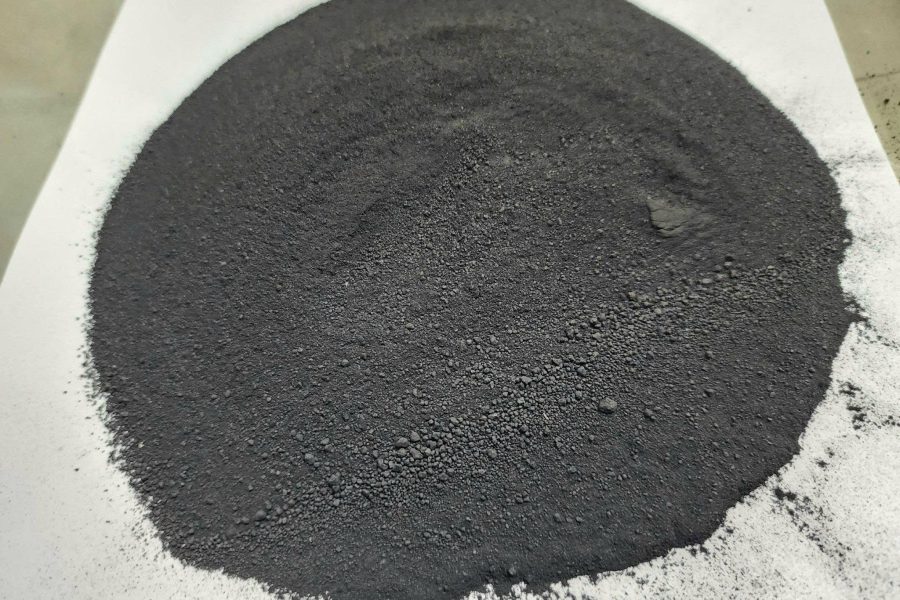Recovered Carbon Black (rCB)
A sustainable alternative to virgin carbon black, used in the production of recycled tires and related products; as a material for the plastics, paint, and construction industries.
Output: 62,400 tons/year
Recovered Carbon Black – a replacement for virgin carbon black, widely applied in the production of recycled tires, plastics, paints, and construction materials.
Detailed Description:
1. Introduction to rCB
Recovered Carbon Black (rCB) is a product created during the pyrolysis of rubber waste, especially used tires. After the pyrolysis process separates the oil, gas, and metal components from the tire, the remaining part is carbon black – a material of high industrial value.
With a large output of 62,400 tons/year, the rCB supplied by IMES is an ideal raw material, helping to reduce dependence on virgin carbon black while promoting a circular economy and sustainable development in many industries.

2. Characteristics and Technical Composition
rCB mainly contains non-crystalline carbon particles of nano-size, with a characteristic black color, high light absorption, and good thermal conductivity. The main components include:
- Pure Carbon (~75–85%)
- Ash and minerals (~10–20%)
- Trace amounts of residual light oil (<5%)
The product can be processed using classification, fine grinding, and screening technologies to suit specific applications.
3. Reasons to Choose rCB over Virgin Carbon Black
- Saves Natural Resources: rCB does not require the extraction of petroleum – the main feedstock for producing virgin carbon black.
- Reduces Production Costs: The cost is significantly lower, yet it still meets the technical requirements of many industries.
- Reduces CO₂ Emissions: The production of rCB helps reduce greenhouse gas emissions by up to 80% compared to virgin carbon black.
- Diverse Applications – Stable Quality: Easily replaces a portion or all of traditional carbon black in products like rubber, paint, plastics, and construction materials.
4. Applications of rCB in Industry
4.1. Recycled Tire Manufacturing:
rCB is an essential component in the production of recycled tires, technical rubber, and other rubber products. Thanks to its electrical conductivity and mechanical reinforcement properties, rCB helps improve tire quality while ensuring cost-effectiveness and environmental friendliness.

4.2. Plastics Industry:
In engineering and recycled plastics, rCB is used as a filler and a natural black pigment. It is suitable for applications such as black plastic pipes, electrical wire casings, and dark-colored molded technical parts.
4.3. Paint and Pigment Industry:
rCB is used in coatings, printing inks, and thermal insulation paints as a pigment and to increase coverage. Products include water-based or solvent-based paints, industrial printing inks, and protective metal coatings.
4.4. Construction Industry:
rCB is used in the production of bricks, floor tiles, and thermal insulating mortar to enhance heat and load-bearing capacity, as well as in recycled sound and thermal insulation materials.

5. Production and Processing of rCB at IMES
At IMES, rCB is produced through a modern pyrolysis process, which includes:
- Pyrolysis of waste tires in anaerobic conditions at high temperatures.
- Separation of steel wire, recovery of pyrolysis oil and gas.
- Cooling and collection of carbon black, followed by processing: fine grinding, screening, and packaging.
6. Contribution to the Circular Economy Model
Recovered Carbon Black is a typical product of the circular model in the waste treatment industry. Using rCB not only recycles difficult-to-treat waste like tires but also creates a secondary raw material for production, reduces dependence on petroleum, and contributes to a green industrial economy.

